A compact guide to small space gardens
When a space is small, you want to get it right. Darren Martin from Community Greening has made it easy with just four steps.
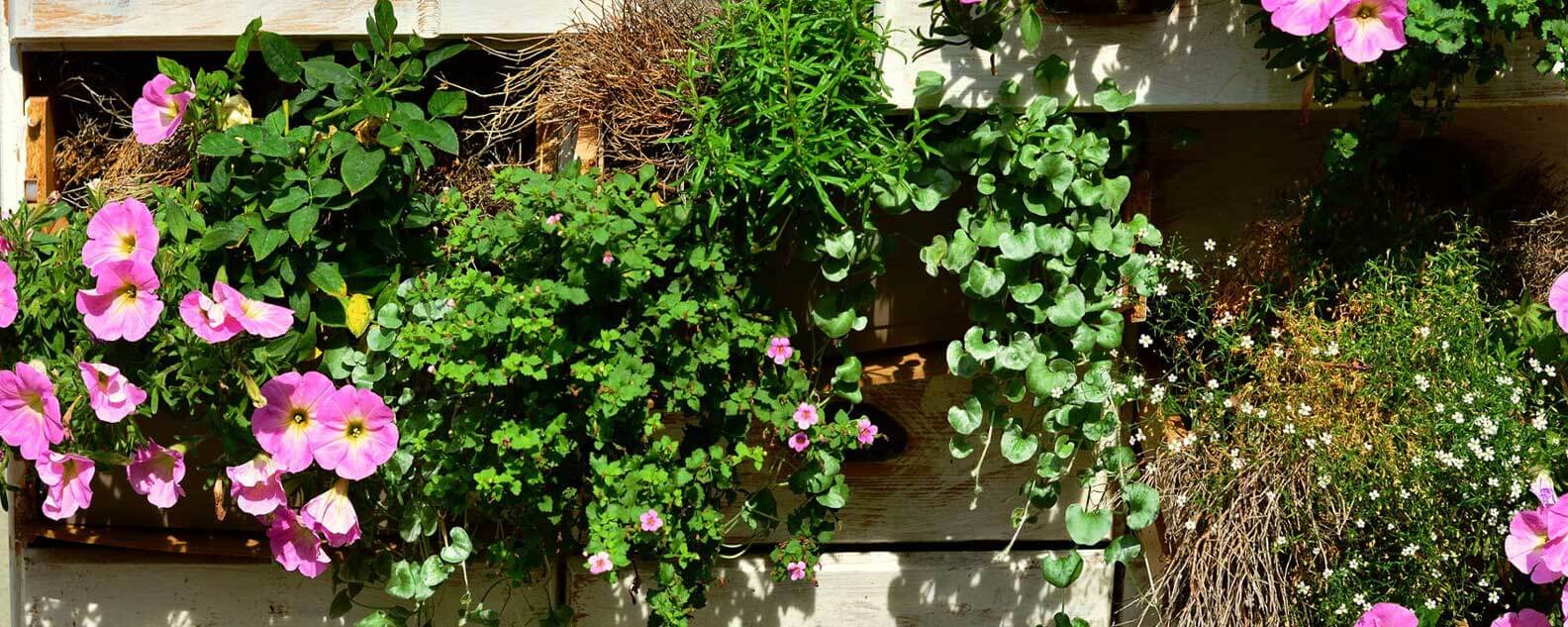
The great thing about gardening is that it’s accessible to everyone. It doesn’t matter how big your space is, because even when it’s just right, it won’t be long before it’s too small again! Anyhow, we all know, it’s not the size of your garden that matters, but how we use it that counts. We just have to be creative!
I’m guessing that you’ve already decided to use your balcony, courtyard or veranda, or at least some of it, to create your own little oasis. A place where you can unwind from the daily grind and relax with your plants.
Understand your canvas
So, the first thing we need to do is get to know our space.
How much sunshine does it get at different times of the day and from season to season? How hot does it get? Is it windy? Does it get rain or is it under cover? Are there any limitations from the body corporate?
All these things will influence the plants we choose and how we arrange them.
One of the biggest challenges people face in small spaces is not enough sunlight. Not enough sunlight to grow vegies that is. There are some vegies and herbs that can handle reduced sunlight, but most need at least 6 hours a day.
So, do we let that stop us? No! We just grow something else.
Choose the right plants
Maybe we create a little rainforest using a variety of plants best suited to reduced light levels, such as palms, ferns and epiphytes? Indoor plants are back in fashion and most nurseries have plenty to choose from with unusual foliage and colour patterns.
While not typically an indoor plant, I can’t go past bromeliads at the moment. The colours definitely make a garden ‘pop’.
Maybe a succulent garden full of your favourite cacti and succulents in a variety of terracotta pots is more suited to your space. When I visit the Royal Botanic Garden Sydney, I always find time to wander in the Succulent Garden. I love the history of the site and the amazing plants from around the world.
Read more on how to make a succulent mini-garden here in Trend alert: succulent mini-gardens are back.
Once you’ve decided on the plants to grow, the creativity begins.
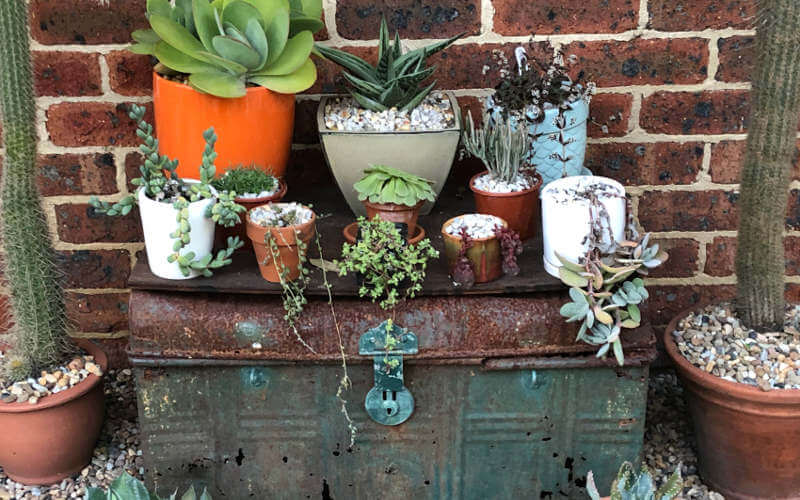
Have fun with it
Personally, I like to collect pieces that are often discarded, found in council clean-ups, given away or purchased from flea markets for a fraction of their original price. Pieces that have aged gracefully and celebrate their chips, cracks and rust spots. Pieces that accept the natural cycles of life.
The only down-side is, that because each piece is so unique, it takes time to build-up your collection. But, that’s half the fun.
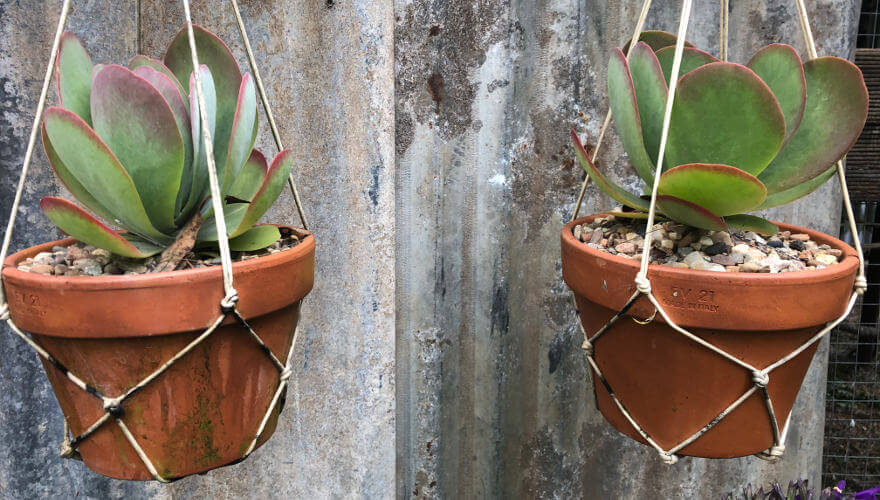
Arrange. Rearrange. Switch. Arrange again
So now you have your pots, benches, and maybe a few ornaments, how will you organise your space? Tall plants at the back, smaller plants at the front, just like a school photo. Don’t be afraid to experiment. Move things around, check it from all angles and remember odd numbers are visually appealing.
As I mentioned earlier, it won’t be long before you’ve filled your space so it is important to look up. Make sure you use the vertical space. Hanging pots are great, multi-tiered shelves increase space, and why not even include some air-plants that don’t require a pot?
Remember to have some fun and don’t be afraid to experiment.
Happy gardening!
If you are a journalist and have a media enquiry about this story, please click here for contact details and more information.
Related stories
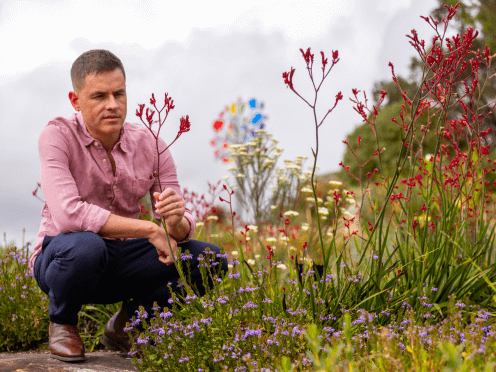
In this new episode of What the Flora!? discover why this world-first global ‘Tree of Life’ study is a new milestone in understanding the evolutionary history of flowering plants.
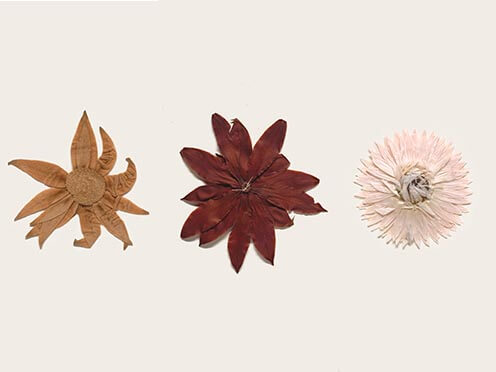
A project digitising over one million flora specimens has won the National Trust's President’s Prize for 2025 and is helping important research in critical biodiversity, ecological, and evolutionary studies.
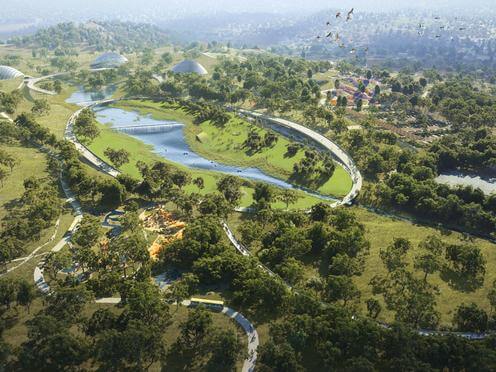
Australian Botanic Garden Mount Annan Master Plan